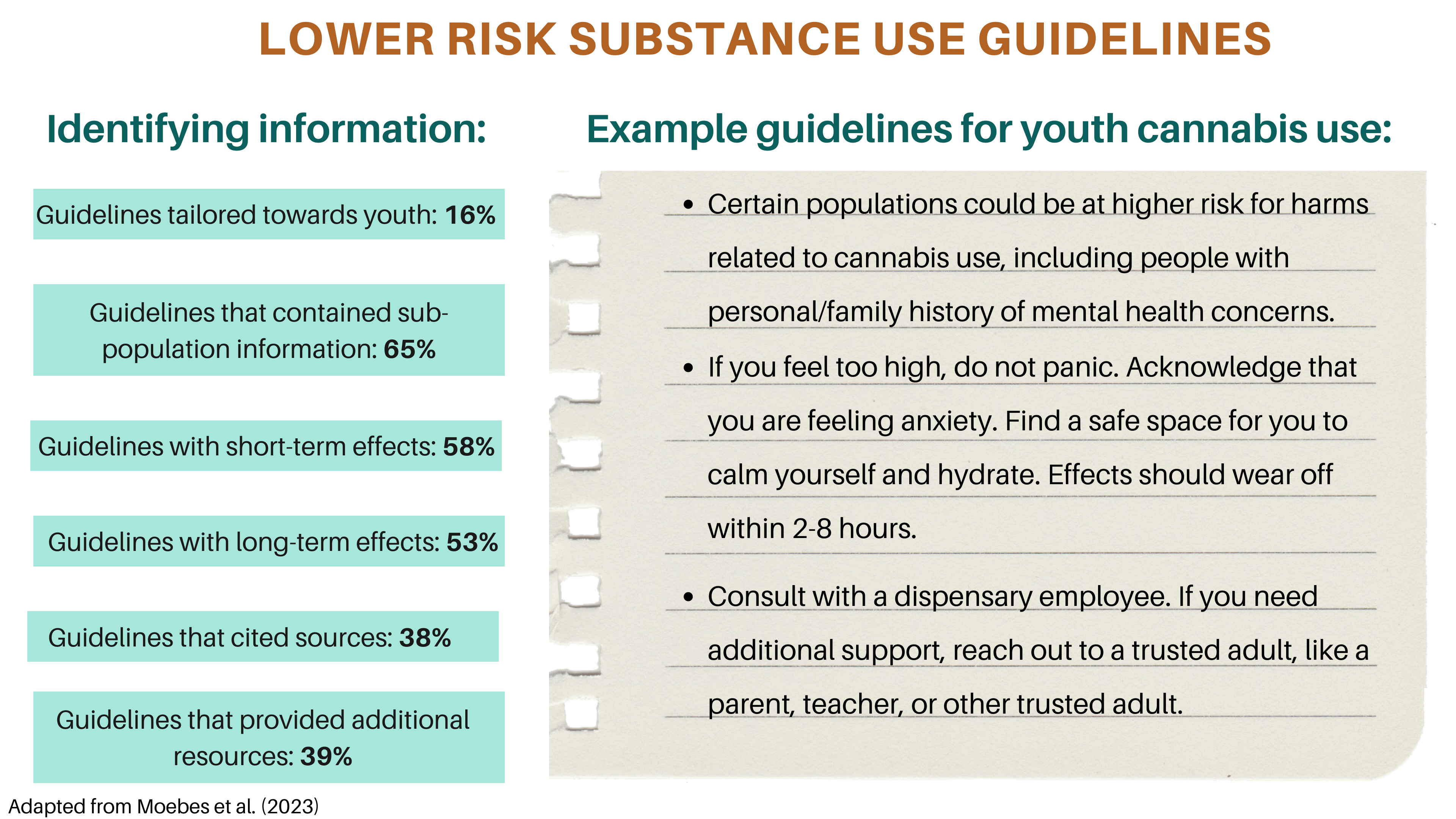Historically, government organizations in Canada enforced abstinence as a means of addressing substance use, particularly among youth. However, this position fails to empower youth to make better, more educated choices about their substance use. Lower-Risk Substance Use Guidelines (LRSUGs) aim to educate individuals about substance use and provide them with strategies that can help minimize potential harms. Nevertheless, these guidelines have been primarily developed with adult substance use in mind, despite being effective with younger populations. This week, STASH reviews a study by Zakkaery Moebes and colleagues that identified LRSUGs accessible to youth and categorized these guidelines based on (1) the organization presenting the information, (2) the type of drug, (3) the information being provided, and (4) whether they were tailored to a specific population.
What were the research questions?
(1) What types of organizations developed LRSUGs, (2) what types of drugs were the guidelines developed for, (3) what type of information was included in the guidelines, and (4) were the guidelines tailored to a specific population?
What did the researchers do?
To identify LRSUGs available to youth, the authors searched various definitions of LRSUGs in Google and reviewed the first five pages of results. This search yielded 130 LRSUGs that met inclusion criteria. Those guidelines were then coded based on identifying information (e.g., whether the guidelines were tailored to youth).
What did they find?
Public health (39%) and third-sector (e.g., nonprofits) (32%) organizations were most likely to publish LRSUGs, with guidelines related to alcohol (31%) and cannabis (23%) being the most common. Although the majority of guidelines were made for the general public, 16% were tailored specifically toward youth, but over half of all guidelines addressed recommendations for other sub-populations, including people with mental health conditions. Several LRSUGs included information about short-(58%) and long-term effects (53%) of substance use, but only about 40% of guidelines cited their sources or included resources to further support youth (See Figure).

Figure. This Figure depicts identifying information included in the sample along with examples of LRSUGs for youth cannabis use. Click image to enlarge.
Why do these findings matter?
A glaring finding from this study was the lack of youth-specific guidelines. This reflects the need for stakeholders to develop standardized harm reduction tools that are tailored to underserved populations. A “one-size-fits-all” approach can be harmful, as substances may impact populations differently (e.g., someone with a pre-existing mental health condition). Additionally, LRSUGs should incorporate a wider array of substances, including tobacco and prescription opioids, as these are used by a considerable percentage of Canadian youth. More research is needed to identify sources of information that youth rely on for substance-related knowledge, including social media. Health organizations should consider platforms such as TikTok to disseminate LRSUGs, citing their sources and providing referral information for youth who would like additional knowledge/support.
Every study has limitations. What are the limitations in this study?
The data collection method used in this study was meant to replicate how youth would likely access substance-related information via Google. As a result, they did not conduct a more formal scoping review of scientific publications. Moreover, the researchers did not investigate LRSUGs found on social media platforms nor guidelines provided by smaller organizations, such as schools or religious groups.
For more information:
Community Voices in Recovery is a free, online course for allied health professionals who want to improve racial and health equity in addiction care. If you are worried that you or someone you know is experiencing addiction, the SAMHSA National Helpline is a free treatment and information service available 24/7. For more details about addiction, visit our Addiction Resources page.
— Nakita Sconsoni, MSW
What do you think? Please use the comment link below to provide feedback on this article.




